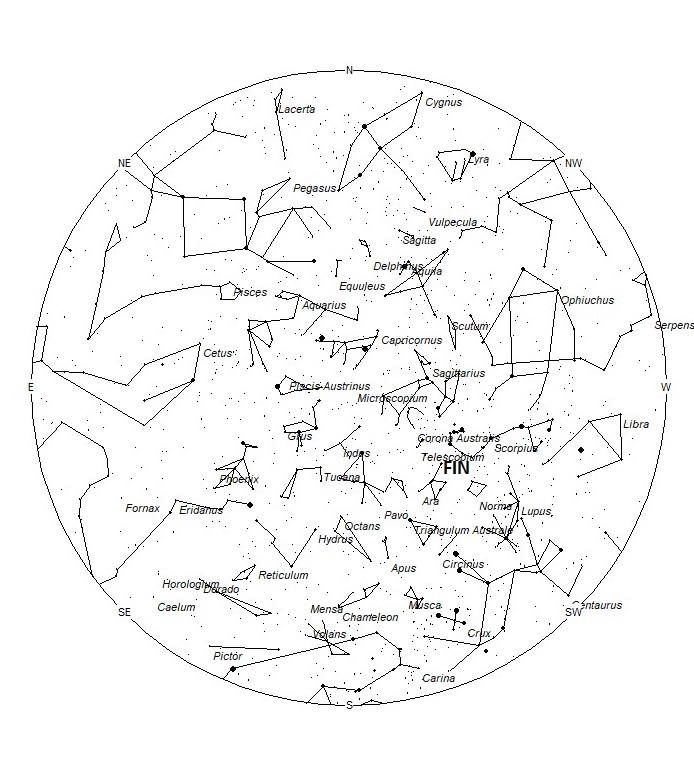
During late September and early October, the Earth is predicted to pass through several debris fields created by comet 15P/Finlay. At least one of those intersections of late September has already provided positive results, leading to speculation that the events of October 7th will also be worth viewing. On that particular night the Earth may encounter three different streams of particles created by comet 15P/Finlay in the years 2002, 2008, and 2014. The first encounter and most promising is predicted to occur at either 00:38 or 1:10 universal time (UT) on October 7th. This would actually be on the evening of October 6 as seen from Santiago, Chile and neighboring time zones. These particles were left behind by the comet in 2014 and are expected from shoot forth from the dim constellation of Ara the alter. The nearest bright star is third magnitude eta Scorpii, which lies 6 degrees northeast of the radiant. Expected zenith hourly rates range from 30 to 100 for this encounter.
The next possible encounter is predicted to occur near 3:15 UT, some two hours later from debris left behind in 2008. The radiant will be lower in the sky at this time and viewing conditions will be worse than with the first possible encounter. Lastly, the third encounter is predicted for 21:18 UT (also October 7), which favors South Africa. Unfortunately the radiant will only be about 15 degrees high at this time and much of the activity, if it occurs, will be blocked by the horizon. These meteors would be from the 2002 trail. The radiant is expected to be near the same location in the sky for all these possible encounters. Any activity from this source is expected to be faint and very slow. Therefore it is important that one observes from the darkest site possible in order to see faint meteors. Be certain to keep bright lights from spoiling your night vision as it takes at least 15 minutes to recover. Fortunately the moon is near its new phase at this time and will not be visible at night.
Unfortunately these meteors are not visible from the Northern Hemisphere as the radiant area lies too low in the sky or below the horizon for locations north of the equator.
REFERENCES: 2021 IMO Meteor Shower Calendar by Jürgen Rendtel. Page 10
Jeremie Vaubaillon, IMO News, 30 September 2021




 You saw something bright and fast? Like a huge shooting star? Report it: it may be a fireball.
You saw something bright and fast? Like a huge shooting star? Report it: it may be a fireball.  You counted meteors last night? Share your results with us!
You counted meteors last night? Share your results with us!  You took a photo of a meteor or fireball? You have a screenshot of your cam? Share it with us!
You took a photo of a meteor or fireball? You have a screenshot of your cam? Share it with us!  You caught a meteor or fireball on video? Share your video with us!
You caught a meteor or fireball on video? Share your video with us!